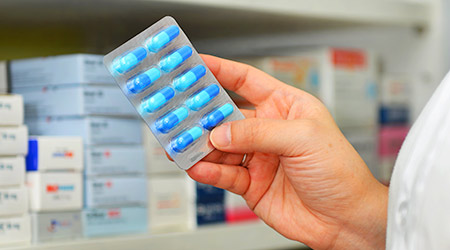Parata Systems is a leading pharmacy automation company and leading solution provider of medication dispensing and workflow technology that empowers pharmacists to help people lead healthy lives.
In 2001, Parata was founded to solve a problem: pharmacy teams were spending more time filling prescriptions than consulting patients. Today, Parata offers the most extensive pharmacy automation portfolio in the industry — designing, building, and supporting vial-filling, medication adherence, and workflow solutions.
Parata firmly believes that the Internet of Things (IoT) is a cornerstone of the company’s service infrastructure and a key differentiator in the market. With a constant focus on innovation and a forward-looking mindset, Parata is helping pharmacies prepare for the next major shift in healthcare and reinforcing its customer focus.
The challenge
Struggling with waning reimbursements, pharmacies are forced to look at costs of production, technology and other internal factors to provide lower costs for customers and improve revenue.
With pharmacies under budget constraints, solution providers must provide agile technologies to meet evolving regulations. Parata had previously used an IoT platform to provide connectivity across various facilities, but the need to improve customer satisfaction in a changing healthcare landscape prompted Parata to evaluate its technology investments. The platform in place lacked the data visibility, reporting and analytics capabilities necessary to radically improve how they provided day-to-day support for its customers. Parata needed a solution that would analyze and translate datasets into resourceful, actionable insights allowing them to stand out from competitors.
It was also important to Parata to implement technology that would provide the ability to proactively monitor operation performance metrics across its customers deployments without causing any disruption or downtime.
To move from a reactive service model to a proactive service model, Parata had to be able to detect anomalies in product performance before customers did and troubleshoot to prevent downtime.
Additionally, with the ability to deploy software remotely, Parata saw an opportunity to increase return on investment and customer satisfaction.
The approach
After finding their existing IoT platform lacking, Parata needed to evaluate other solutions. Enticed by the ThingWorx interface, the reporting functionality, and the analytics and machine learning capabilities, Parata chose the ThingWorx platform to replace their existing platform. Parata began with a baseline connectivity strategy, implementing remote monitoring capabilities for various product lines in use at customer sites to generate reports.
With the ThingWorx platform, Parata could improve upon its already unmatched customer service, giving pharmacies peace of mind about their technology investments. The analytics and reports provided by ThingWorx quantify the value of Parata’s services, validating their offering as a critical need for their customers.
The solution
Since making the switch to ThingWorx, Parata has expanded its use of IoT to optimize internal operations during the engineering and manufacturing activities for its medication dispensing solutions. With machine learning capabilities, Parata can predict, identify, assess, and remedy issues in the performance of its products with real-time insights. This provides customers with a new level of support that had not been available to them previously. Parata routes these real-time alerts into Salesforce with the ThingWorx Salesforce API, often replacing reactive service maintenance.
For example, if a sensor in a vial filling robot experiences a malfunction, the machine sends an alert to Salesforce. It automatically logs a ticket to resolve the issue before that malfunction can inconvenience the customer. With these features in place, the Parata field service team
is dispatching less often because the technical assistance center can resolve many remotely, reducing travel costs to and from customer sites. In addition, the real-time data and alerts help to pinpoint errors, cutting the average service call from 28 minutes to only 7. When the service team does go to the customer site, they are more often fixing a machine that’s had no downtime.
Through the IoT and remote connectivity capabilities provided by ThingWorx, Parata has become more proactive in customer service and support. On average, Parata has experienced a 90 percent reduction in on-site software updates for IoT-enabled product lines and achieved a success rate of greater than 80% in remote support resolution.
Looking to build on these technological advances, Parata plans to further leverage machine learning, explore augmented reality, and utilize analytics to help customers optimize their businesses. The ability to show what one of their machines would look like operating on a customer site through AR, would truly be an industry differentiator. Parata believes by continuing to partner with PTC, they will power pharmacies with technology, advice, and people they can count on so pharmacies can do what they do best: care for patients.

 Healthcare Is the New Retail
Healthcare Is the New Retail Bridgeway Behavioral Health Services Launches Campaign to Renovate Health Center
Bridgeway Behavioral Health Services Launches Campaign to Renovate Health Center Ground Broken for New North Dakota State Hospital
Ground Broken for New North Dakota State Hospital AI Usage for Healthcare Facilities
AI Usage for Healthcare Facilities Ground Broken on Pelican Valley Senior Living Modernization Project
Ground Broken on Pelican Valley Senior Living Modernization Project